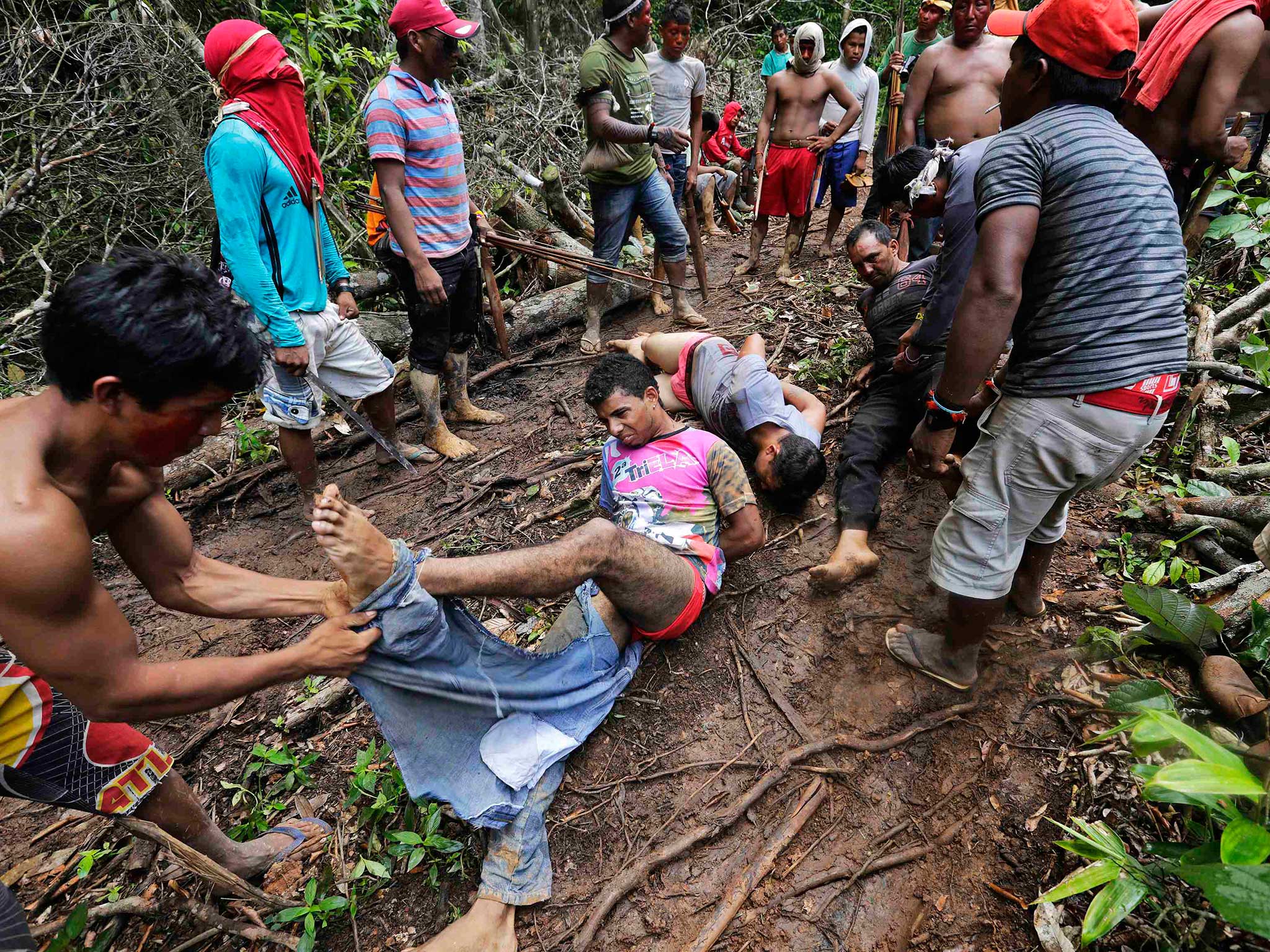Photographs show Amazonian tribe capturing and stripping illegal rainforest loggers
Indians have taken matters into their own hands after claiming Brazilian government was not doing enough to protect their territory

Your support helps us to tell the story
From reproductive rights to climate change to Big Tech, The Independent is on the ground when the story is developing. Whether it's investigating the financials of Elon Musk's pro-Trump PAC or producing our latest documentary, 'The A Word', which shines a light on the American women fighting for reproductive rights, we know how important it is to parse out the facts from the messaging.
At such a critical moment in US history, we need reporters on the ground. Your donation allows us to keep sending journalists to speak to both sides of the story.
The Independent is trusted by Americans across the entire political spectrum. And unlike many other quality news outlets, we choose not to lock Americans out of our reporting and analysis with paywalls. We believe quality journalism should be available to everyone, paid for by those who can afford it.
Your support makes all the difference.Amazonian warriors are catching and stripping loggers illegally destroying the rainforest, in an attempt to protect their territory in north-eastern Maranhao state, Brazil.
The Ka’apor Indians, who along with four other tribes are the legal inhabitants and caretakers of the Alto Turiacu Indian territory in the Amazonian basin, have taken matters into their own hands after what they claim was a lack of sufficient government assistance.
The tribes have sent out their warriors to expel all loggers they find, setting up monitoring camps in the areas that are being illegally exploited.
Reuters photographs detail how these warriors are dealing with the latest threat to their land.
After capturing the loggers the Indian warriors tie them up, stripping them so they cannot escape, and then frequently using the loggers own tools to ruin the already cut logs or equipment.
The Ka’apor people are a distinct ethnic group of indigenous Brazilians, who have faced significant tension and escalating violence defending their territory.
Since the 1980s as much as a third of the Ka’apor Indians’ land has been illegally deforested and converted to towns, rice fields and cattle pastures by landless peasants, cattle ranchers, loggers and local politicians.
The Alto Turiaçu Indigenous Reserve (now Terra Indigena Alto Turiaçu) was demarcated by Brazil’s National Indian Foundation (FUNAI) in 1978, roughly 100 years after the Ka’apor Indians migrated there from more central regions.
Join our commenting forum
Join thought-provoking conversations, follow other Independent readers and see their replies
Comments